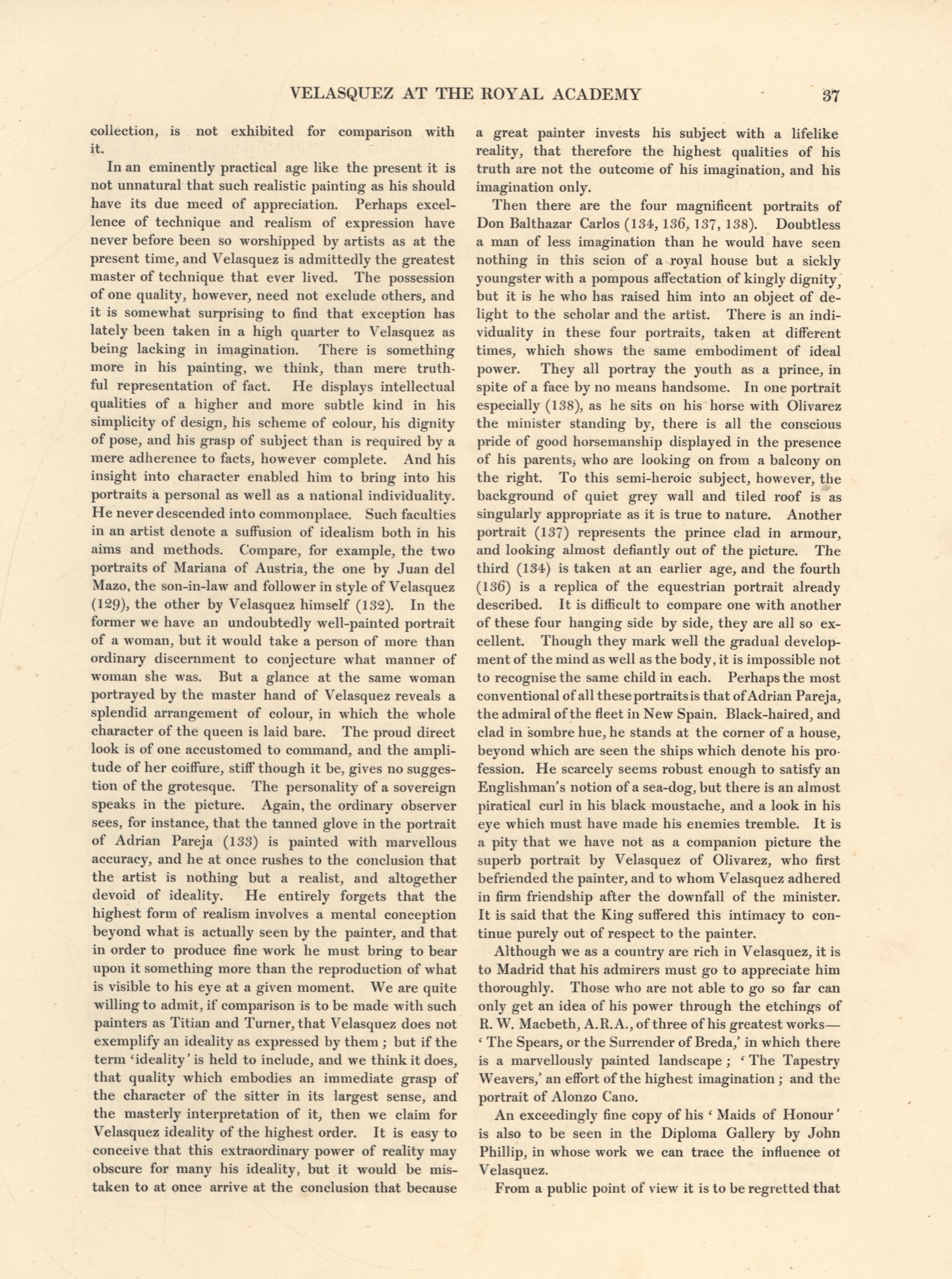2 of
You are browsing the full text of the article: Velasquez at the Royal Academy
Click here to go back to the list of articles for
Issue:
Volume: 1 of The Art Review
| The Art Review Volume 1 Issue: 2 February 1890 Page: 36 | ||||||||||||||||||||||||||||||
| Velasquez at the Royal Academy | ||||||||||||||||||||||||||||||
|

|
|
||||||||||||||||||||||||||||
| The Art Review Volume 1 Issue: 2 February 1890 Page: 37 | ||||||||||||||||||||||||||
| Velasquez at the Royal Academy | ||||||||||||||||||||||||||
|

|
|
||||||||||||||||||||||||

